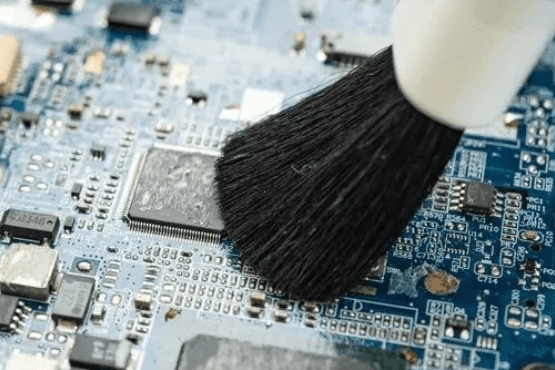What is a PCB? A Complete Guide for Engineers & Procurement Professionals (2025 Updated)
Discover what a PCB (printed circuit board) is — its structure, materials, and manufacturing proce
How to Clean Electronic Circuit Boards: The Definitive Guide to Using a Printed Circuit Board Cleaner
Table of Contents
ToggleWhen it comes to maintaining PCB/PCBA reliability, knowing how to clean electronic circuit boards is essential. Whether you’re removing dust, flux residues, or corrosion, choosing the right printed circuit board cleaner makes all the difference. This guide will explain each step—from circuit board cleaner selection to deep-clean techniques like ultrasonic cleaning—so professionals can effectively restore electronics.
Circuit boards suffer from various contaminants, including:
Dust and debris: Blocks ventilation and causes overheating.
Flux residues and oils: Remain sticky and can become conductive over time.
Corrosion and oxidation: Forms crusty layers, increasing resistance or causing shorts.
These issues can degrade performance or lead to circuit failure. Proper circuit board cleaning prevents such risks, especially when flux from soldering remains or corrosion worsens over time.
(1)Isopropyl Alcohol (IPA)
High-purity (90% or above) IPA is the go-to electronic circuit board cleaner. It dissolves flux, oils, and light grime and evaporates quickly without residue.
(2)Deionized/Distilled Water
Safe for rinsing, especially after IPA or detergent cleaning. Since it lacks conductive ions, it’s suitable for boards if thoroughly dried.
(3)Specialized PCB Cleaning Solutions
Commercial cleaners—such as flux removers and circuit board cleaning solutions—work efficiently, including aerosol sprays that require minimal wipe-off.
(4)Ultrasonic Cleaning Solutions
Used in ultrasonic tanks, typically water-based with low-concentration surfactants, along with IPA or detergents. This method deeply cleans through cavitation.
(5)Baking Soda Paste
Effective for removing corrosion by acting as a mild abrasive and neutralizing acid, especially for battery leakage cleanup.
Essential tools for safe and effective PCB cleaning include:
Anti-static brushes or soft nylon brushes for dust removal.
Compressed air or electronics-grade vacuum for dislodging debris.
Lint-free swabs and cloths, such as foam swabs, for precise solvent application.
Ultrasonic cleaner, oven (low heat), or desk lamps for thorough drying.
Ensure the board is powered off and disconnected from any source.
Use compressed air or a soft brush to clear dust. Take care not to dislodge small components.
3–4. Apply IPA with lint-free swabs or a soft brush. Use heavier cleaning solutions or mild detergents for oily residue.
For corrosion, apply a baking soda paste or mix IPA with water. In serious cases, let it sit, then brush and rinse gently.
Rinse with deionized water if needed, then dry thoroughly using low heat or airflow. Avoid closed ovens due to alcohol vapor risk.
Ultrasonic cleaning uses high-frequency sound waves to create cavitation bubbles that dislodge grime. Ideal for intricate boards, it delivers deep cleaning but may damage sensitive components like MEMS sensors or capacitors.
Always work in a well-ventilated area when using IPA.
Avoid harsh solvents like acetone or vinegar, which can damage PCB materials.
Use ESD-safe tools to prevent static damage.
Do not dry IPA-soaked boards in sealed ovens—risks of vapor ignition are real.
Always clean flux residues for high-frequency or critical applications—even “no-clean” flux may impact surface insulation or coating adhesion.
For routine dust removal in non-critical settings, gentle dry cleaning may suffice.

| Method | Use Case | Pros | Cons |
|---|---|---|---|
| Compressed Air / Brush | Dust, loose particles | Fast, safe | Risk of dislodging components |
| IPA / Contact Cleaner | Flux, oils, grime | Fast drying, residue-free | Flammable, need ventilation |
| Water-Based / Specialized | Flux, oils, mild corrosion | Eco-friendly | Requires thorough drying |
| Baking Soda Paste | Corrosion removal | Gentle, neutralizing | Time-consuming |
| Ultrasonic Cleaning | Deep-cleaning complex boards | Thorough, fast | Can damage sensitive components |
Using the proper printed circuit board cleaner and following safe, proven techniques ensures longevity and optimal performance. Start with dry cleaning, move on with IPA or specialized cleaners, and escalate to gentle corrosion treatment or ultrasonic cleaning as needed. Always prioritize safety in both solvents and drying.
Cleaning your PCBA right today safeguards your devices tomorrow.
Discover what a PCB (printed circuit board) is — its structure, materials, and manufacturing proce
This article focuses on the high - speed chip mounters in Huachuang PCBA Processing Factory. It firs
Discover a custom pcb design framework in 10 strategic steps—covering cost estimation, layout best